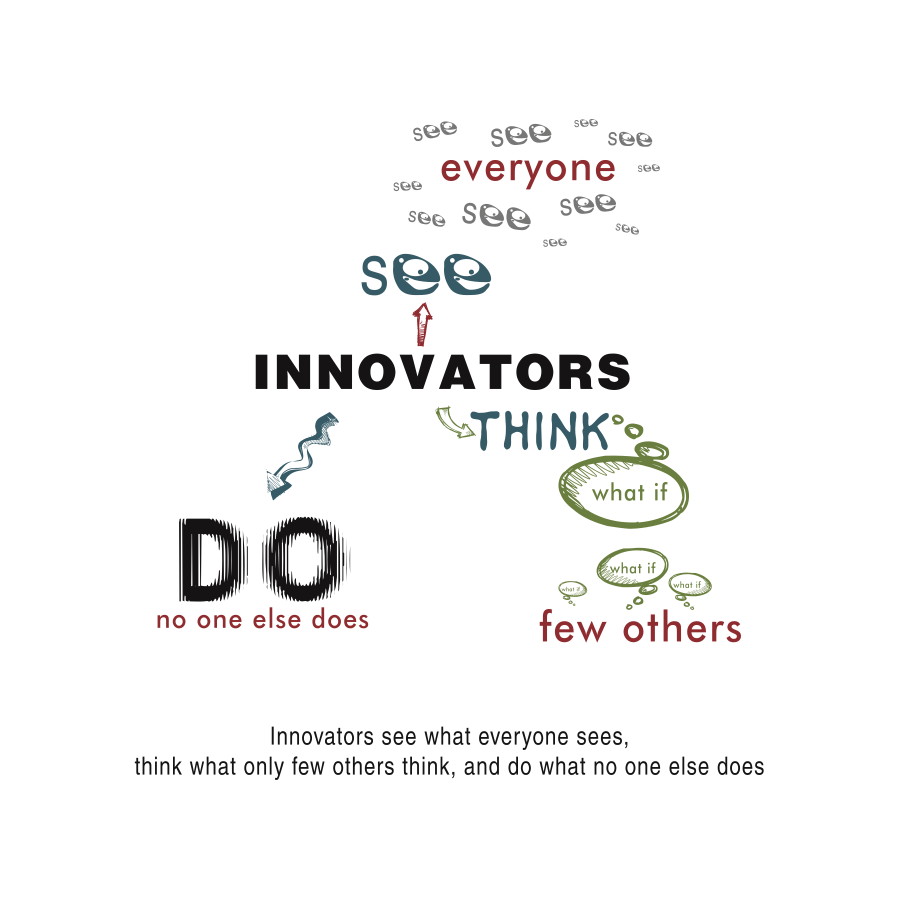
Last week, we talked about the first part of the saying, “Innovators see what everyone sees – thinks what only few others think – and do what no one else does.” Let’s focus on the second part today by looking at the way innovators think.
It’s not that innovators have different thought patters or are contrarian or necessarily more creative. It’s because they are not satisfied with the first option that comes to mind. Dan and Chip Heath have shown us in their book Decisive that the quality of our decisions goes up when we have more options. Furthermore, they found that 70 percent decisions are made with only one option available (yes, one option).
You may ask, “How can a decision be made when there is only one option?” Here’s how this goes: We’re confronted with a challenge or something that needs a solution or way forward. As we try to figure out how to tackle our challenge, we keep looking for a solution (and it’s easy to get stuck on the reasons why any of the ideas that spring to mind won’t work). When we finally come up with a way to do it, we believe we have found the right answer and act on it. We go with the answer that frees us from being stuck by our challenge, and we gladly take the solution. Again, this is how over 70 percent of decisions are made: We act on the one option that comes to mind and implement it.
However, their research shows that decision-makers later rate less than 50 percent of their decisions as having been good ones. That’s a horrible statistic because a coin toss at least gets a 50-percent success rate (or so it seems). The reason that the coin toss seems better is simply because in a coin toss, there is a second option available (the other side of the coin) whereas in most of our decisions, we didn’t really consider a second option.
Here’s the way to improve the quality of our decisions: add at least one more option before you make a decision. The same research that looked at the success rate of one-option decisions also found that the success rate goes up when there is a second option in the mix: decision-makers report that they made a good decision in over 60 percent of cases when they had a second option to choose from.
That’s what innovators do: They keep looking for additional options, even after finding one possible answer and option. They do this even (or maybe especially) when the first option seems like a good one.
Make it real
This week, pay attention to your decision-making. How often do you experience a situation where you need a solution for something, think about how to handle it, and go into action as soon as you come up with one possible way forward? When this happens – pause. Think of at least one more option. Then decide. Then act.



